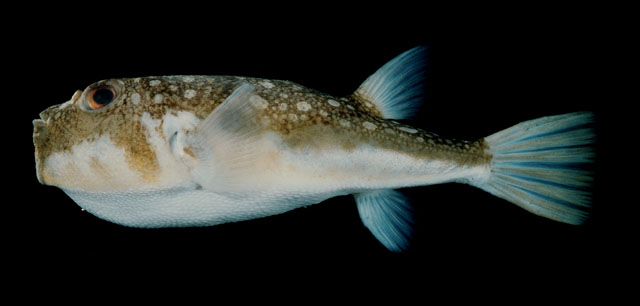| Tetraodontidae (Puffers), subfamily: Tetraodontinae |
| 30 cm TL (male/unsexed) |
|
reef-associated; brackish; marine; depth range 0 - 400 m |
| Indo-West Pacific: South Africa to China. Marshall Islands in Micronesia (Ref. 1602). |
|
Dorsal spines (total): 0-0; Dorsal soft rays (total): 9-10; Anal spines: 0-0; Anal soft rays: 8-8. Blackish brown with yellowish white spots above, sides yellow, white below; dorsal, pectoral and caudal fins dusky with a yellow tinge; males with white anal fins, yellow in breeding females (Ref. 4919). |
| Common in tide pools, estuaries, and in the sea to depths of 400 m. Very poisonous, not touched by fishes and sea birds. Hands should be washed after handling this fish. |
|
Least Concern (LC); Date assessed: 07 June 2011 Ref. (130435)
|
| poisonous to eat |
Source and more info: www.fishbase.org. For personal, classroom, and other internal use only. Not for publication.

